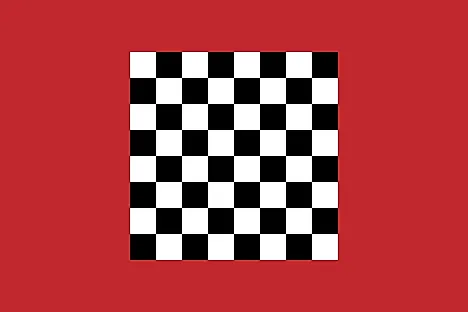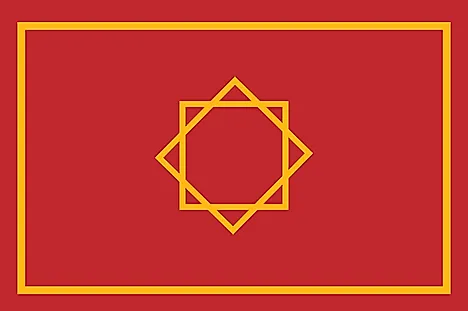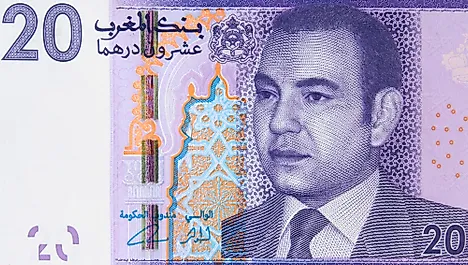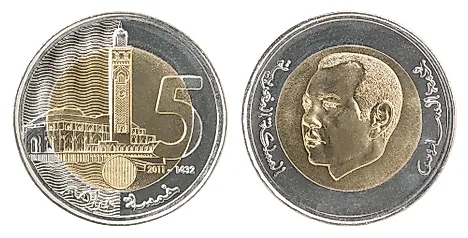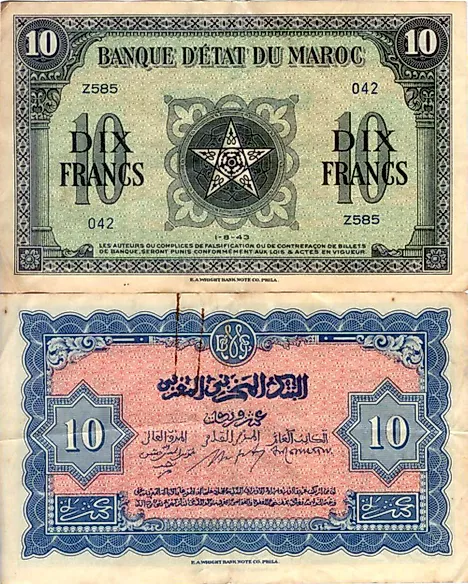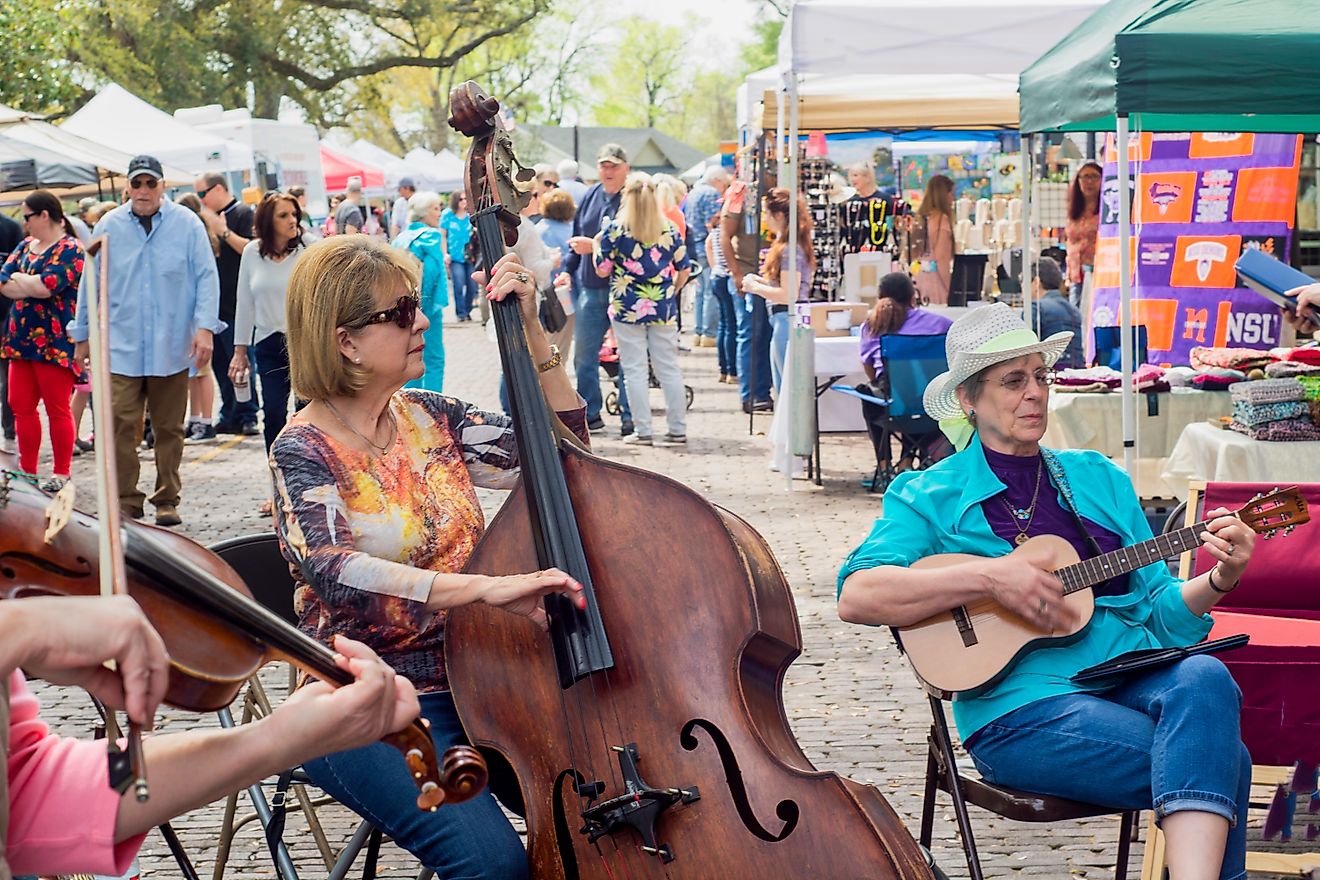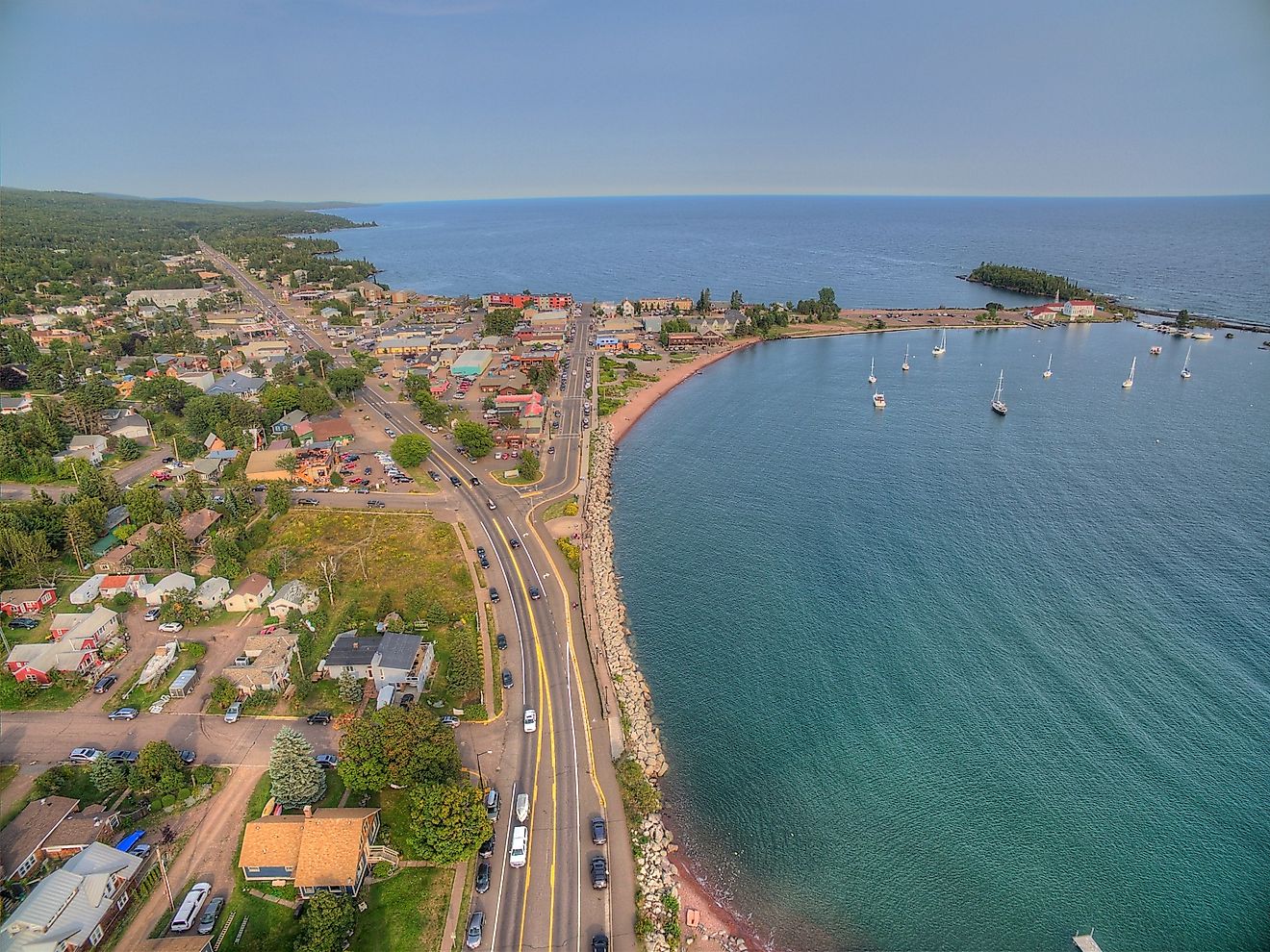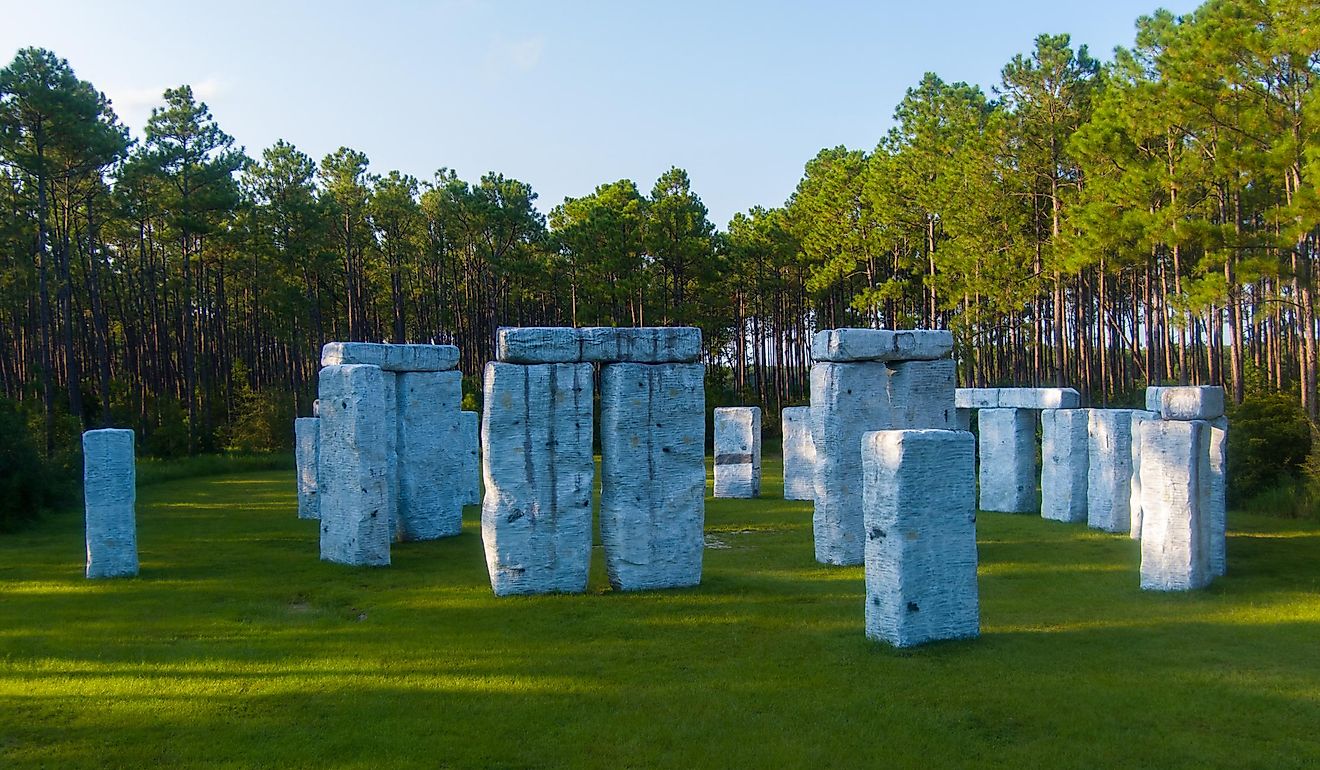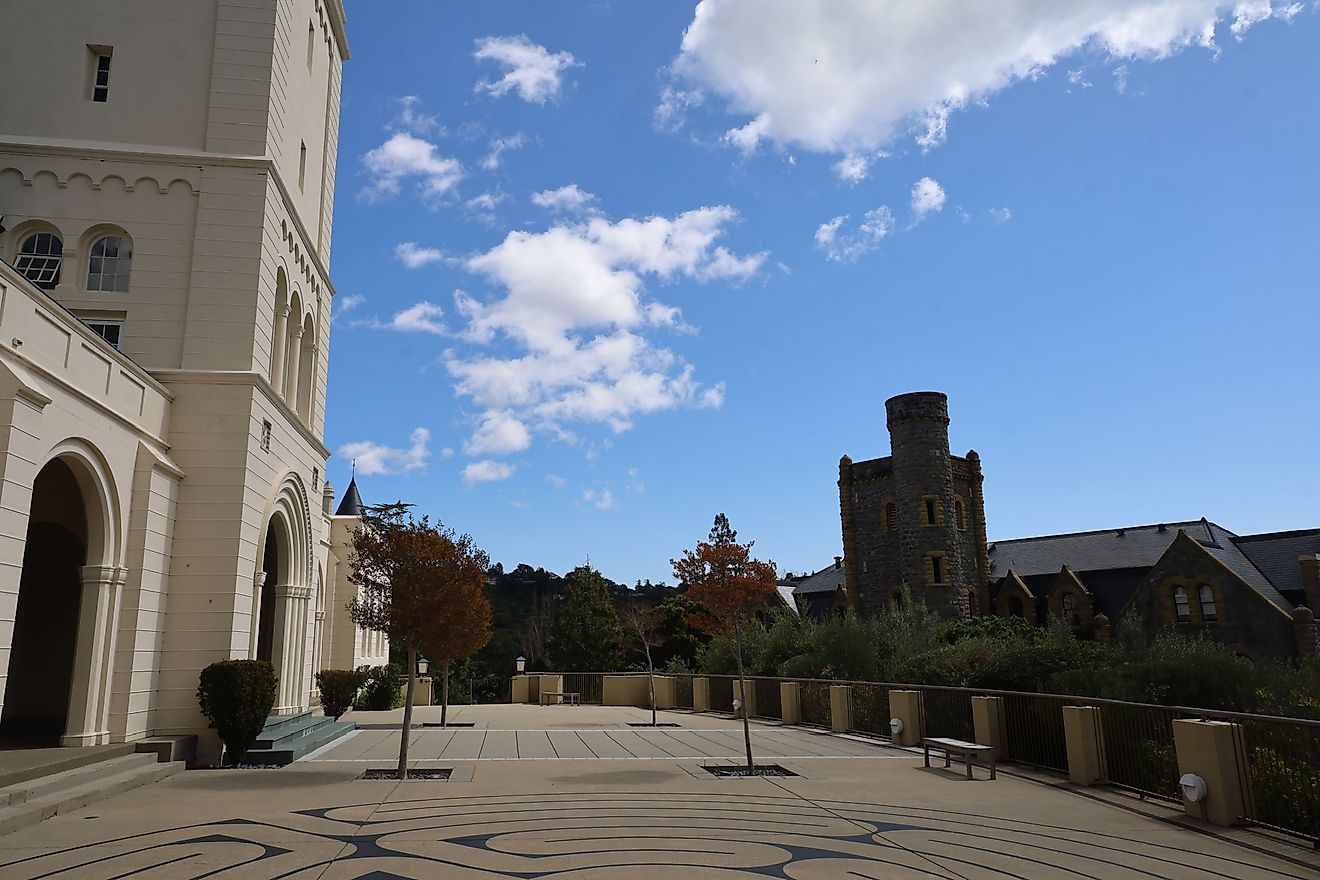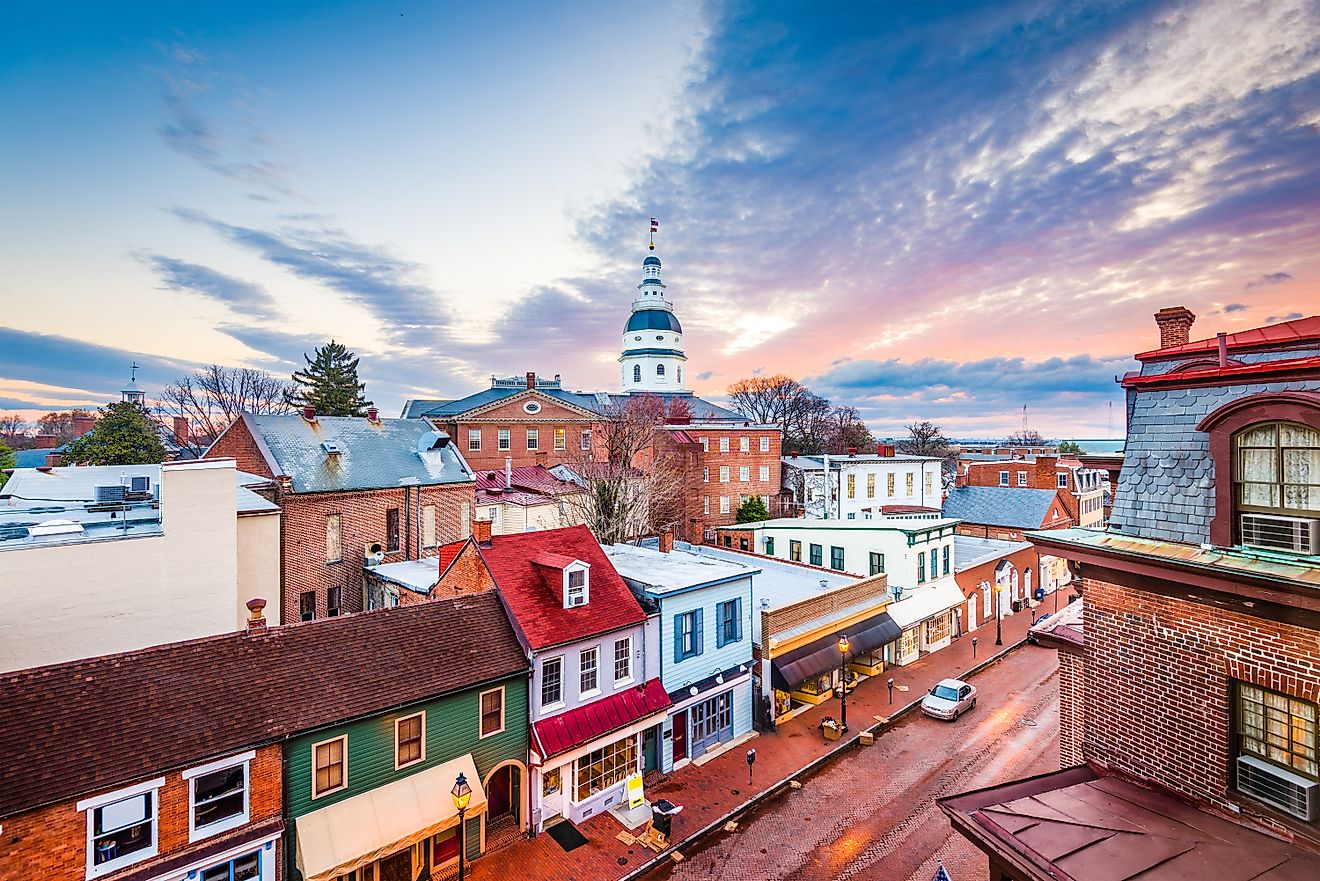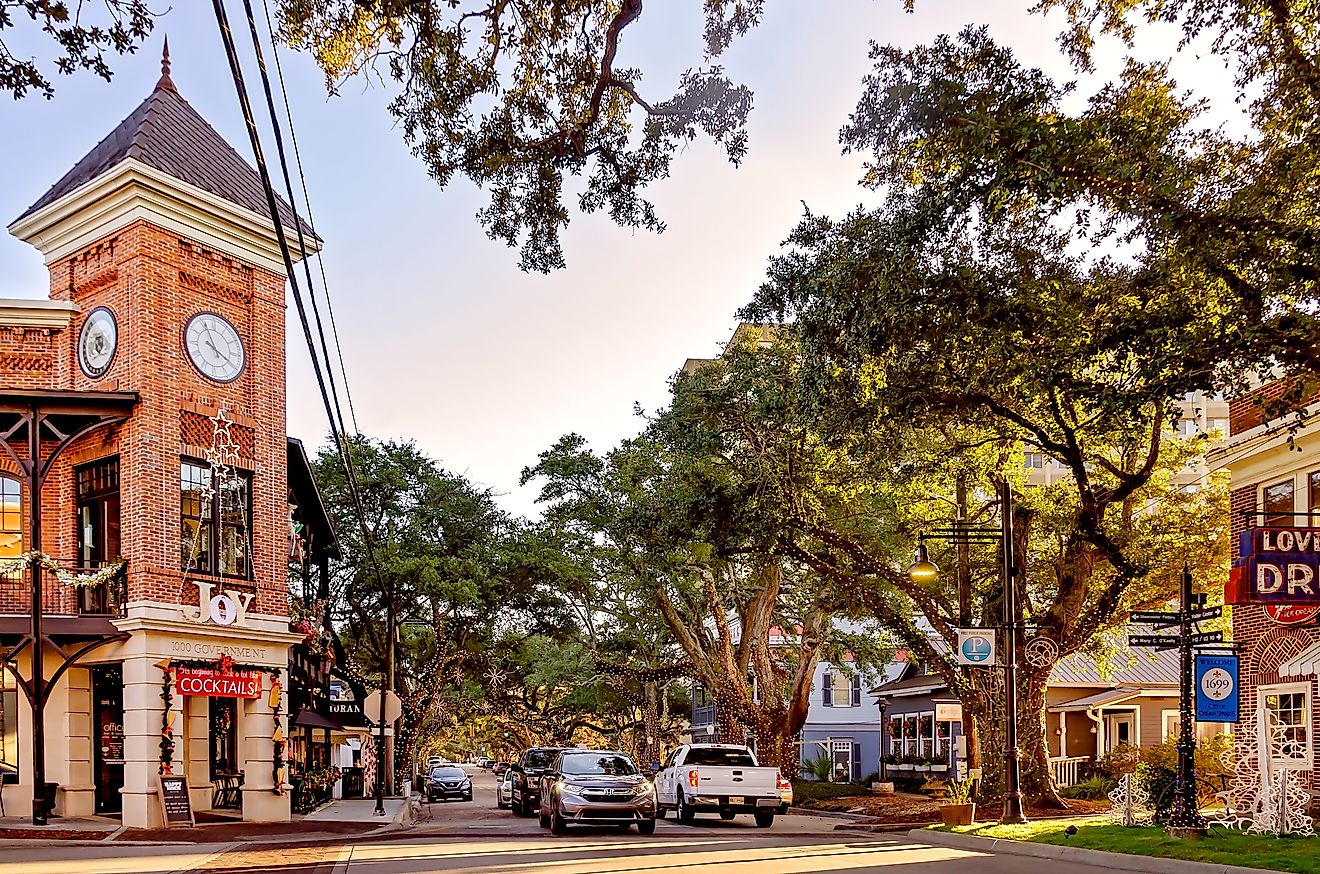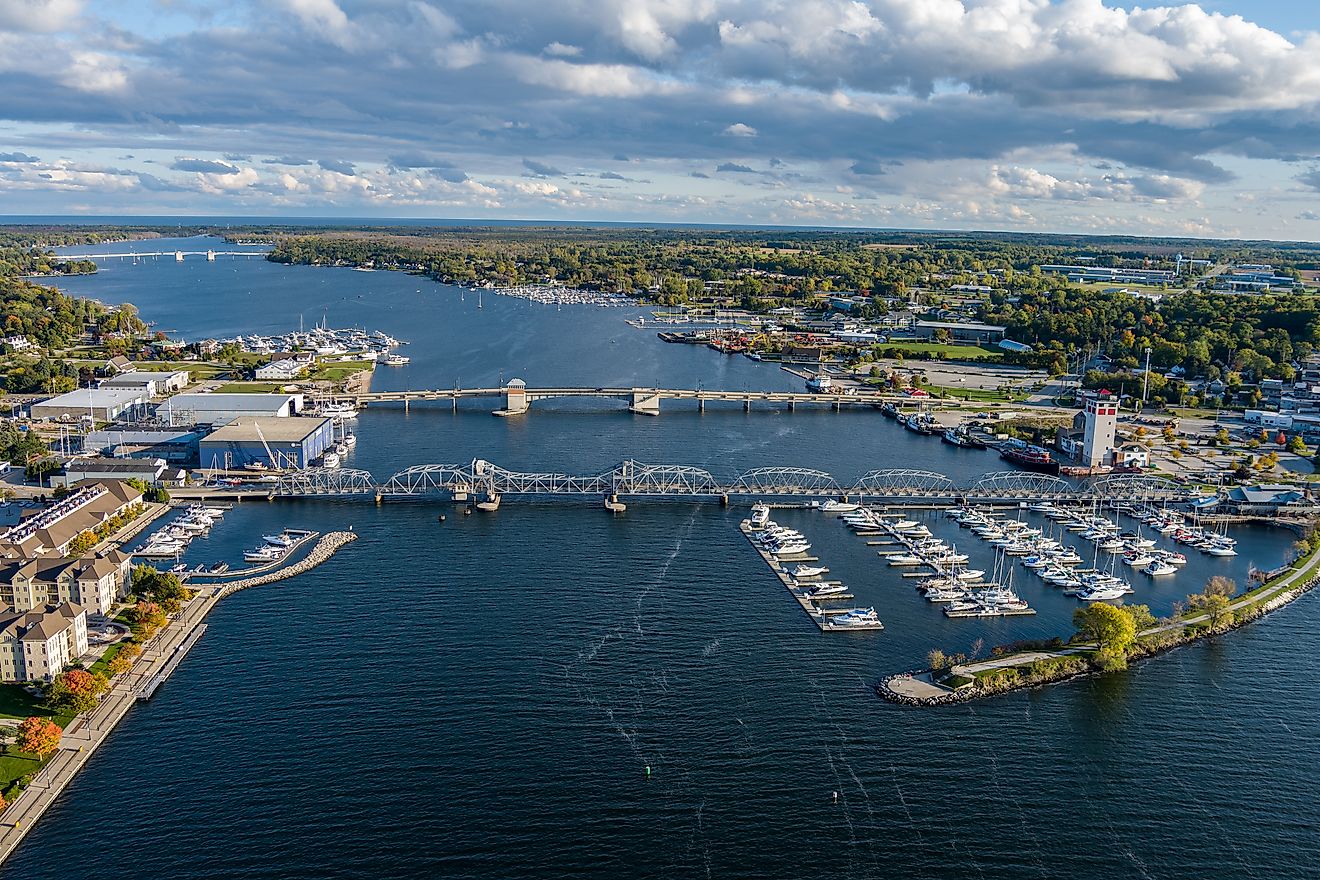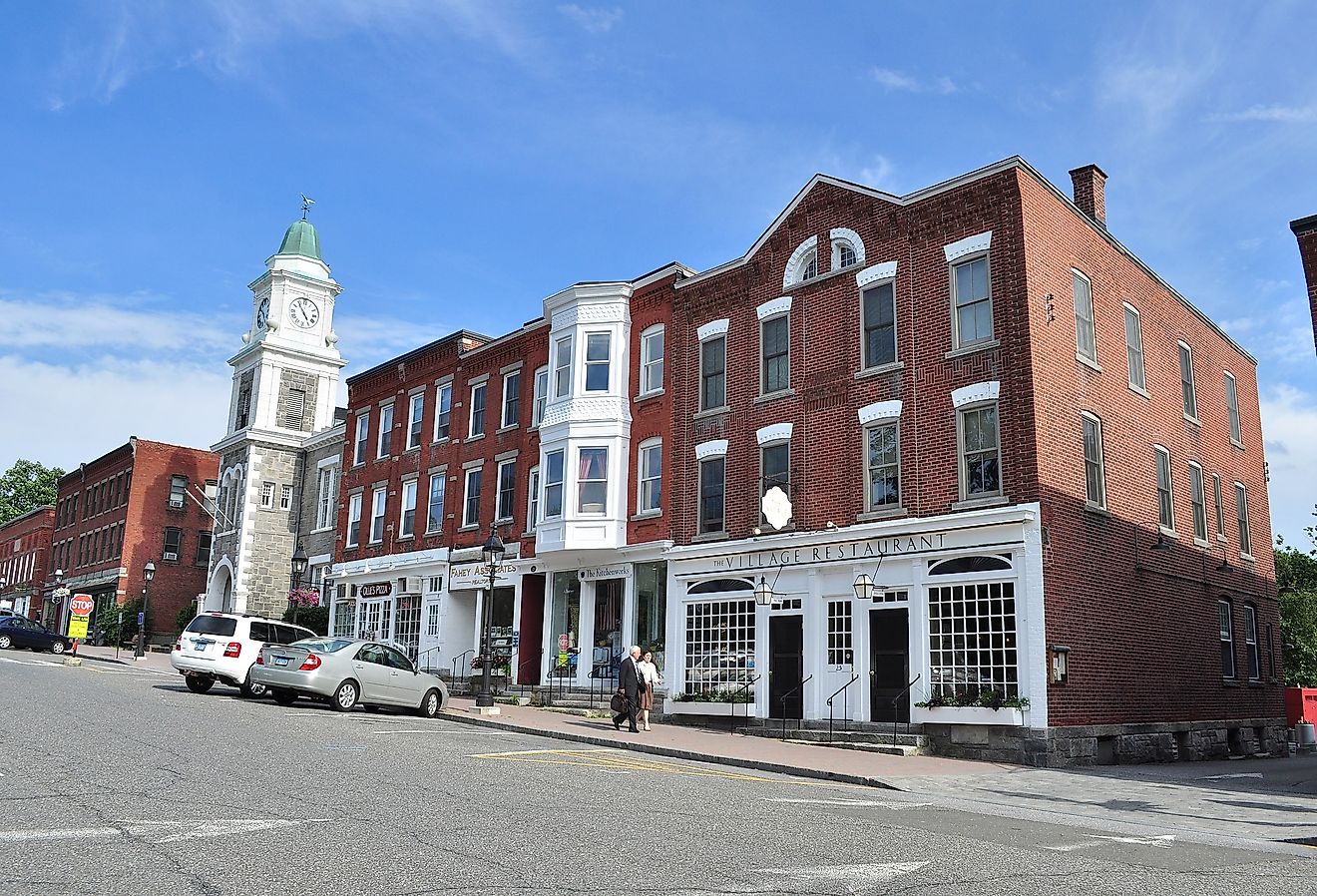Flags, Symbols, & Currencies of Morocco
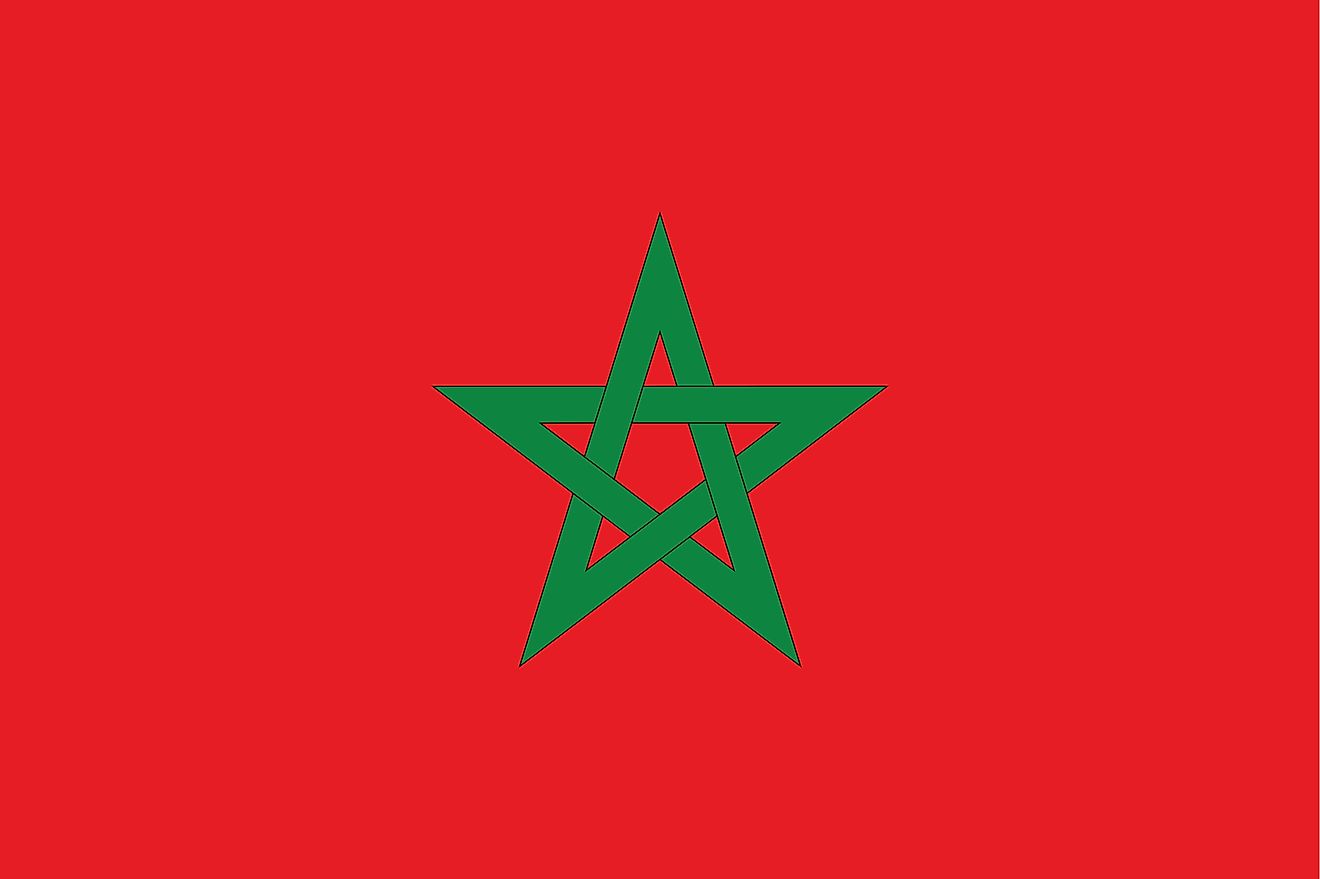
The Kingdom of Morocco adopted its national flag and state ensign on November 17, 1915. When Morocco fell under the control of French and Spanish colonizers, the flag could only be used inland, with its use at sea was prohibited. After regaining independence in 1955, Morocco restored its national flag. The flag was designed by Mulay Yusef, Sultan of the Alaouite Dynasty who ruled the kingdom between 1912 and 1927. The Moroccan flag used during the Alaouite dynasty, between 1666 and 1915, was a simple red banner with no markings.
The Moroccan national flag is rectangular with a proportion of 2:3. The flag is red with an open green star, which has five points, at the center. The star has five continuous branches, each having a width of one-twentieth its length. According to the constitution, one point should always point upward. The red color is significant in Morocco as it proclaims descent from the Alaouite dynasty, and therefore red in the flag symbolizes strength, bravery, valor, and hardiness. Green represents for hope, peace, love, wisdom, joy, and is also the color of Islam. The five-pointed star represents the five pillars of Islam.
Historical National Flags
The dynasties of Idrisid and Almoravid, which ruled Morocco from 780 until 974 and from 1070 until 1147, respectively, used white silk banners which were primarily use in battle. The latter, however, included an Arabic inscription which translates to “There is no god but God, and Mohammad is His Prophet.” The Almohad dynasty that ruled between 1147 and 1269 had a red flag with a charge at the center resembling a chess board with 64 black and white squares. The Marinid dynasty took over from 1258 until 1420 and used a red flag bearing an octagon star and an outline along the edges, both in yellow. The Saadi dynasty also used this flag during its reign, which began in 1554 and ended in 1659. From 1666 until 1915, the Alaouite dynasty ruled Morocco and had a red flag with no markings.
Other Moroccan National Flags
Other flags used in Morocco include the civil and naval ensigns. The civil ensign is similar to the national flag, but also includes a yellow crown and yellow star located in the canton (upper left corner). The naval ensign in Morocco resembles the civil ensign, but with a yellow crown and star in all of four corners. The Kingdom of Morocco also uses a naval jack which is similar to the national flag but is swallow-tailed and has a yellow borderline. The Royal Standard of Morocco is green and bears the Moroccan Coat of arms at the center.
Symbols of Morocco
National Coat of Arms of Morocco

Morocco's coat of arms was designed by Gauthier Hainaut and introduced on August 14, 1957. features two lions supporting a shield that displays a green pentagram supporting a golden rising sun with 15 rays on an azure background. Above the crown rests a royal crown and below the shield is a ribbon with the motto: In Tansourou Allaha Yansouroukoum (If you glorify God, He will glorify you), displayed in Arabic
National Anthem
- Anthem Title: an-našīd aš-šarīf (Cherifian Anthem)
- Music composer: Léo Morgan
- Lyricist: Ali Squalli Houssaini
- Date of Adoption: 1956
an-našīd aš-šarīf (Cherifian Anthem) is Morocco's national anthem, officially adopted in 1956 at independence. The music was composed in 1956 by Léo Morgan, a military officer during the reign of Sultan Yusef and Hubert Lyautey However, the Arabic lyrics were written in 1970 by Ali Squalli Houssaini
an-našīd aš-šarīf
manbita l-ʾaḥrār
mašriqa l-ʾanwār
muntadā s-
suʾdadi wa-ḥimāh
dumta muntadāh
wa-ḥimāh
ʿišta fi l-ʾawṭān
li-l-ʿulā ʿunwān
milʾa kulli ǧanān
ḏikrā kulli lisān
bi-r-rūḥi,
bi-l-jasadi
habba fatāk,
labbā nidāk
fī famī wa-fī damī
hawāka ṯāra nūr
wa-nār
ʾiḫwatī hayyā
li-l-ʿulā saʿyā
nušhidi d-dunyā
ʾannā hunā
naḥyā
bi-šiʿār
allāh, al-waṭan,
al-malik.
Cherifian Anthem
Root of the free, and of the
brave
Rising place of the Lights,
Forum of glory and its
protector,
May you perpetuate as its forum and its protector.
May you live among the
homelands
As an address for grandeur
Filling every gardenconveyed by every tongue.
With the spirit,
With the body,
Your son has come
To answer your call.
In my mouth and in my blood,
Your love stirred up as light
and fire.
Let’s go brothers!
Heading for grandeur,
Making the world witness
That we here perpetually live
With the motto:
Allah, homeland, king
The Currency of Morocco is the Moroccan dirham
The currency of Morocco is the Moroccan dirham. Its code is written as either MAD or DH. The Moroccan dirham is most commonly exchanged with the euro. Currently, 1 Moroccan dirham is equivalent to 0.09910 euro, and when converted to US dollars, 1 Moroccan dirham is equivalent to 0.10314 USD. The Moroccan dirham is printed by the Bank Al-Maghrib, which is Morocco's central bank.
Banknotes and Coins
The first coins used in Morocco were silver 1 dirham coins introduced in 1960. Coins in other denominations such as 1, 5, 10, 20, and 50 santimat were eventually minted. From 1960 until 2011, various types of metals were used in the production of coins, including cupro-nickel, bi-meta, aluminium, and silver. Presently, the coins which are used include 1, 10, and 20 sentimat, as well as ½, 1, 2, 5, and 10 dirhams. 1 Moroccan dirham is subdivided into 100 centimes.
The first banknotes issued in Morocco were overprints on existing franc banknotes. However, in 1965, new notes denominated in 5, 10 and 50 dirhams were introduced. Subsequently, the 100, 20, and 50 dirham banknotes were issued in years 1970, 1991, and 1996, respectively. The 5 and 10 dirham notes were converted to coins in 1980 and 1995, respectively. Currently, the notes used in Morocco are 20, 50, 100, and 200 dirhams. The latest banknotes have a portrait of the royal crown and King Mohammed VI. They also have the Moroccan door to the left side of the portrait. The portraits symbolize the importance of the Moroccan architectural heritage and its openness.
Commemorative Banknotes
The 50-dirham banknote was issued in 2009 to celebrate the 50th Anniversary of the Bank Al-Maghrib. In addition, in December 2012, 25-dirham notes were issued to mark 25 years of the Moroccan State Printing Works issuing notes.
Historical Currencies of Morocco
Before 1882, Moroccans used silver, copper, and gold coins as their currency. These three currencies were denominated in "dirham," "falus," and "benduqi," respectively. In 1882, the dirham was subdivided into Moroccan rial, with 50 mazunas being equal to 10 dirham, and 10 dirham being equivalent to 1 rial. Later, when the French took control of most parts of Morocco, the currency changed to the Moroccan franc. This currency was used up until October 16, 1960, when the dirham was reintroduced, thereby replacing the franc. However, even after this, the franc was still circulated. It was not until 1974 that the franc was fully replaced by the santim, which is also known as centimes.
